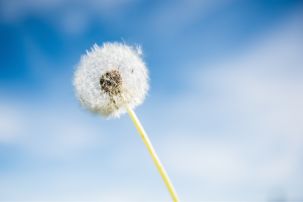Lesson summary
In this activity students identify how they deal with their waste and make comparisons with the ways that older generations dealt with waste when they were young.
Learning intentions:
Students will...
- build an understanding of how different generations managed their waste
- identify and compare the properties of packaging materials and start linking the properties of materials with their use.
Lesson guides and printables
Lesson details
Curriculum mapping
Australian curriculum content descriptions:
Science Year 2:
- Earth’s resources, including water, are used in a variety of ways (ACSSU032)
- People use science in their daily lives, including when caring for their environment and living things (ACSHE035)
History Year 2:
- How changing technology affected people’s lives (at home and in the ways they worked, travelled, communicated and played in the past) (ACHASSK046)
- Pose questions about past and present objects, people, places and events (ACHASSI034)
English Year 2:
- Understand that language varies when people take on different roles in social and classroom interactions and how the use of key interpersonal language resources varies depending on context (ACELA1461)
Syllabus Outcomes: ST1-9ES, EN1-1A, HT1-3, HT1-4
Resources required
- Classroom containers for rubbish
- Recycling and a paper reuse box
- Writing and drawing materials
- Compost bucket (optional: depending on if the school has a composting system)
- A range of clean waste packaging materials with at least some with recycling symbols (e.g. aluminium can, plastic bottle, steel can, paper, glass jar, fruit box, apple core). Make sure steel cans don’t have sharp edges.
Skills
This lesson is designed to build students’ competencies in the following skills:
- communication
- critical thinking
- collaboration
Additional info
Planet Ark’s National Recycling Week started in 1996 to bring a national focus to the environmental benefits of recycling. This highly regarded annual campaign continues to educate and stimulate behaviour change by promoting kerbside, industrial and community recycling initiative. It also gives people the tools to minimise waste and manage material resources responsibly at home, work and school. In partnership with Planet Ark, we have developed lessons from early learning through to year 10 to help educators bring these important topics into the classroom.
National Recycling Week is held in the second week of November each year but you can recycle all year-round with these lessons which were designed to be used at any time. Click here to find out more about National Recycling Week and the Schools Recycle Right Challenge.


Welcome back!
Don't have an account yet?
Log in with:
By signing up to Cool.org you consent and agree to Cool's privacy policy to
store, manage and process your personal information. To read more, please see
our privacy policy here(Opens in new tab).
Create your free Cool.org account.
Many of our resources are free, with an option to upgrade to Cool+ for premium content.
Already have an account?
Sign up with:
By signing up to Cool.org you consent and agree to Cool's privacy policy to
store, manage and process your personal information. To read more, please see
our privacy policy here(Opens in new tab).